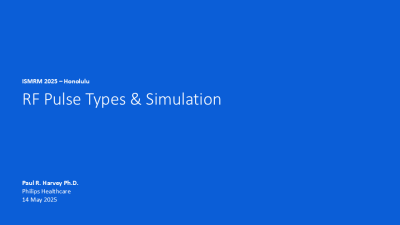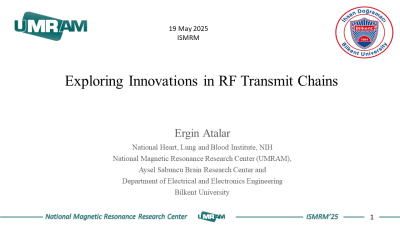Sunrise Course
Why Didn't My RF Pulse Work?
ISMRM & ISMRT Annual Meeting & Exhibition • 10-15 May 2025 • Honolulu, Hawai'i

| 07:00 |
 |
RF Pulse Types & Simulation
Paul Harvey
Impact: RF pulses are vital in MRI for signal
conditioning, localization, and efficient data acquisition.
This lecture covers the history and evolution of
slice-selective RF pulses, exploring various types, with
simulations and coded examples demonstrating their
properties and optimization.
|
| 07:20 |
 |
Exploring Innovations in RF Transmit Chains
Ergin Atalar
Impact: The lecture will cover the components of the RF
transmit chain in detail, while also exploring innovative
advancements.
|
| 07:40 |
Gradient & RF Modulation: Multidimensional and Spectral-Spatial
Pulses
Peder Larson
Impact: Multidimensional RF pulses are explained through
the excitation k-space perspective, with examples in 2D and
spectral-spatial RF pulse design.
|
The International Society for Magnetic Resonance in Medicine is accredited by the Accreditation Council for Continuing Medical Education to provide continuing medical education for physicians.